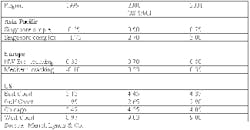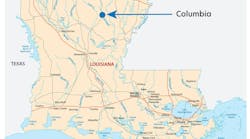Bob Williams
Executive Editor
The dramatic recovery in the refining sector is a global one. While the recovery has been strongest in the US during the first quarter-when European and Asian markets still were showing signs of weakness, at least early in the quarter-the turnaround is now evident in those markets as well.
Refining margins in Asia and Europe are now averaging levels close to the top of the range seen for the past 5 years. The strength in the US refining market is a contributor to the turnaround outside the US. Because the US is a net importer of gasoline and some other refined markets, a tight supply situation in the US means a stronger draw on imports and thus a tightening of markets in Europe and Asia.
Merrill Lynch, for one, sees the US requiring increasing volumes of imports over the next several years, because it expects product demand growth in the US to contine to exceed domestic "capacity creep" (the effect of non-grassroots capacity expansions coming from debottlenecking and minor revamps).
But this is a symbiotic relationship. As long as Asian and European margins remain robust, so too will those in the US. If the US margins remain strong while those in Asia and Europe still lag, so much product from these two regions would flow into the US as to start swelling supplies and thus weakening margins in the US.
So it is especially good news for US refiners that analysts such as Merrill Lynch predict margins in Europe and Asia remaining higher on average this year and improving further in 2001 (see table). As this situation persists, it encourages an atmosphere of robust margins continuing in the US through next year.
European improvement
The turnaround in European refining margins stems from a number of factors that have brought European refined products stocks to the bottom of their 5-year average range (which took some doing, considering the massive stocks overhang late last year; a massive drawdown involving about 60 million bbl was involved.
The turnaround is no less remarkable for the extent of the slump that existed at the start of the year. European margins temporarily rallied at the end of 1999 with the huge drawdown in stocks, but subsequent weakness in demand owing in large part to the warm winter weather reined product price increases to a point where they lagged the runup in crude oil prices at the start of the year.
But March proved to be the turnaround month, as a surge in gasoline demand led European refiners to run their stills at full throttle, delaying its maintenance turnaround period. As European refineries go into turnaround, that exacerbates the situation of low stock levels in the Atlantic basin and cuts the level of products exports to the US. That will underpin even more strength in margins. Merrill Lynch estimates as much as 10% of European refining capacity will be off-line in the spring.
Also contributing to European margin strength is a continuing shortfall in diesel supply, which Merrill Lynch estimates currently at 100,000 b/d. This situation will only get worse as diesel demand (especially motor diesel) continues to grow and as environmental standards in Europe continue to tighten, closing still more capacity.
Stricter sulfur levels and higher cetane levels mandated in Europe are causing refiners fits there, forcing some to move to higher-quality (and therefore more expensive) crudes.
Low stocks of both crude and products will continue to help keep a prop under refining margins in Europe for the foreseeable future. The turnaround season will help keep products stock levels from ramping up very quickly, while the recent steep backwardation in the market has left refiners reluctant to buy much long-haul crude-preferring instead to keep runs at a minimum even as margins have rebounded.
Asia-Pacific
The turnaround in the Asia-Pacific market has been even more dramatic. According to Merrill Lynch, the Singapore simple refining margin increased from a sizeable deficit of -$0.70/bbl to a hefty $3.44/bbl during the weeks ended Feb. 11 to Mar. 10. Complex margins fared even better. That is the highest level since January 1996 and, before that, during the Persian Gulf crisis in 1991.
In short, the outlook for Asian refining margins is now better than since the beginning of the Asian economic crisis in late 1997.
The contributing factors to this improved outlook include:
- The huge upsurge in US West Coast refining margins (led by gasoline).
- The cuts in refinery runs, especially in South Korea, that stem from working off inventory and reluctance to buy crude owing to market backwardation.
- A surge in stocking-up of supplies as the region's refiners enter their seasonal second quarter maintenance turnaround period.
- The regional shortfall of fuel oil stemming from the big jump in Asia-Pacific refining capacity that has sharply reduced fuel oil output.
- A rebound in demand stemming from Asian recovery from the economic crisis coupled with a slowdown in capacity additions stemming from effects of that same crisis.
Because some of these factors are only temporary, it is likely that downward pressure on product prices will return. But with the likelihood that crude oil prices will soften as more OPEC supplies reach the market, margins are likely to continue to remain healthy, if not quite at the lofty levels of March.
Next week, we'll take a look at how the coming boom in new environmental strictures will tighten markets even more in the years to come.
Global outlook for refining margins
null
OGJ Hotline Market Pulse
Latest Prices as of May 5, 2000
null
null
Nymex unleaded
null
Nymex heating oil
null
IPE gas oil
null
Nymex natural gas
null








